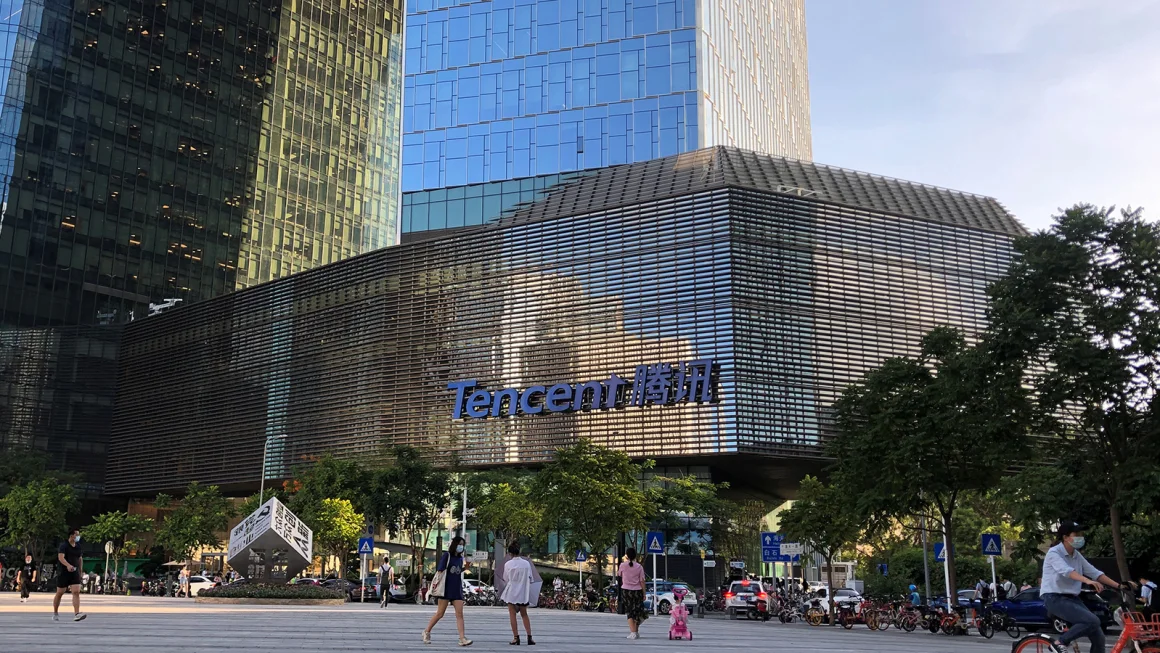
The US Branch of Guard has added Chinese tech organizations Tencent, a virtual entertainment and gaming goliath, and CATL, the world’s biggest battery creator, to a rundown of firms that it charges work with China’s military.
Consideration on the Pentagon list brings about no prompt approvals, however it could influence the notorieties of the organizations named and frustrate their business progress, especially if they maintain that should carry on with work in the US.
Shares in Tencent, which claims Chinese super-application WeChat, were 6.5% lower in Hong Kong on Tuesday, while CATL’s Shenzhen-recorded shares lost over 3%.
They join many other claimed Chinese military organizations on the rundown that the Protection Division charges work straightforwardly or in a roundabout way in the US, as per a notification presented on the Government Register on Monday.
The Pentagon has said the supposed 1260H rundown, which is refreshed yearly, is “a significant proceeding with exertion” in featuring and countering China’s “military-common combination” system, an objective to foster the most mechanically progressed military on the planet by killing obstructions between the country’s regular citizen exploration and business areas and its military.
In an explanation to CNN, Tencent referred to its consideration on the rundown as “a slip-up.”
“We are not a tactical organization or provider. Not at all like authorizes or trade controls, this posting no affects our business. We will in any case work with the Branch of Protection to address any misconception,” a representative said.
CNN has connected with CATL, which supplies batteries to Tesla and plans to give its “insight” and administrations to Portage to make lithium-particle batteries at a plant in Michigan, for input.
A tech competition among Washington and Beijing has been raising in front of the introduction of US President-elect Donald Trump not long from now. Last week, Beijing said it was intending to control the product of innovation used to separate minerals basic for the development of the worldwide electric vehicle (EV) industry.
In December, the active Biden organization forced new product controls on US-made semiconductors that Washington fears Beijing could use to make the up and coming age of weapons and man-made consciousness (computer based intelligence) frameworks.
The US Business Division said the objective of the checks was to slow China’s improvement of cutting edge simulated intelligence apparatuses that can be utilized in war and to undermine the country’s local semiconductor industry, which it says compromises the public safety of the US and its partners.
Separating hindrances
Since coming to control in late 2012, China’s top chief Xi Jinping has released clearing changes to change the Chinese military into a top notch battling force. A vital piece of that modernization drive has been to more readily incorporate the country’s confidential area and safeguard modern base through the sharing of assets, ability and state of the art innovations.
While endeavors to separate obstructions between China’s military and common areas date back to the 1990s, the military-common combination methodology has been progressively advanced under Xi and raised to a public system in 2014, as a component of the pioneer’s vision to transform China into a monetary, mechanical and military superpower.
Individuals’ Freedom Armed force (PLA) is profoundly not the same as the US military, since it is the furnished wing of the Chinese Socialist Faction (CCP), said Isaac Stone Fish, Chief and pioneer behind Methodology Dangers, a business knowledge firm with an emphasis on China.
“Beijing requests that its organizations support the PLA,” he said. “US organizations that have significant associations with enormous Chinese organizations, similar to Portage with CATL, need to comprehend that the administrative, financial, and PR dangers of these organizations will keep on developing.”
Ivan Su, a senior value expert at Morningstar, said that given Tencent’s plan of action, which centers around web-based entertainment and gaming, it “has a decent opportunity to get prohibition through US courts,” like Chinese shopper gadgets creator Xiaomi figured out how to do in 2021 in a different case.
In January 2021, during the fading days of the principal Trump organization, the Safeguard Division added Xiaomi to another rundown, under Segment 1237, which exposed it to brutal limitations, remembering a boycott for American venture.
Before the boycott could produce results, a government judge conceded an impermanent respite to the Chinese organization by deciding that Washington needed “significant proof” to help its case that Xiaomi is possessed or constrained by China’s military. In May of that year, the US Branch of Safeguard and Xiaomi agreed to save the boycott.
CNN’s Hassan Tayir contributed detailing. This story has been refreshed with extra data.


